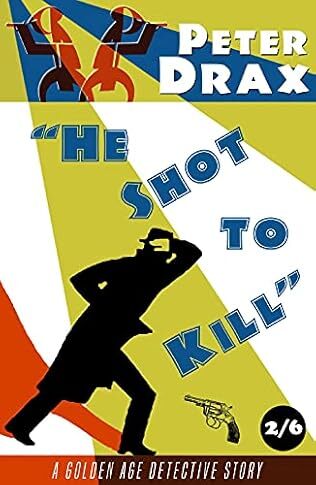He Shot To Kill

A review of He Shot to Kill by Peter Drax – 240909
The second novel by Peter Drax, originally published in 1936 and reissued by Dean Street Press, is another visit to London’s picaresque riparian demi-monde. A thriller rather than a murder mystery as the identity of the killer of the river policeman is fairly evident, it is another tale in which its various characters fall into a web of intrigue and danger more by accident than through design. The catalyst for the series of events is a slip of the tongue, mistaking Germaine for German.
Colonel Meroy is an interesting character, outwardly a pillar of society but in reality an eminence grise in the underworld, who prides himself on his immaculate planning which enables him to carry off audacious raids with the assistance of a small, tightly-knit, hand-picked team of accomplices without exciting the attentions of the police. He did once sail close to the wind in Newcastle many years ago but has learnt from that experience, although it is something that comes to haunt him as the story unfolds.
His neighbour, Ben Lakin, is someone he detests but, unfortunately, his son, Johnny, is becoming romantically attached to Lakin’s daughter, Mary. Lakin is an insurance assessor working for a group of Lloyd’s underwriters but takes a rather cavalier approach to the business of restoring stolen property, salting off the proceeds if he can raise more than they are worth or facilitating their recovery if their value is below par.
Added to the mix is a gang of desperadoes led by Tony Luvello who have their eyes on committing another robbery on the Thames at the same time as Meroy’s attempt on the Germaine, focusing their attention on the German vessel, Holst. A tip off, albeit mangled, excites the interest of the police and in the mayhem, while gold worth around £80,000 is taken from Germaine, a river policeman is shot and killed in the abortive raid on Holst. In the minds of the police and the press the two events are connected which gives Meroy particular cause for concern as he has an uncompromising no guns policy and the Germaine raid was the first time he had involved his son in his plans.
Lakin, using his privileged position as an assessor, obtains information which he believes will enable him to insert himself into the division of the spoils. Mary is initially used as Lakin’s stooge but as her feelings for Johnny grow and she realizes the fix he is in, her loyalties change.
Representing the law is Detective Inspector Thompson of the Yard, famed for always getting his man, and in a way the resolution of this case maintains his record, although the reader knows that he only got part of the answer. His methodology is good solid investigation rather than deductive brilliance, a lot of hard toil and effort rather than a light bulb moment.
Sensibly, Drax does not linger too long on the ins and outs of the police investigation, using it as just one strand in a story of many and shifting perspectives. One of the strengths of the book is that the same events are described from different perspectives and as the reader is invited to keeps tabs with each of the sub-groups of characters there is a heightened sense of competition as the author plays one off against the others in the reader’s mind.
The other strength of the book is Drax’s sense of place and character. He has a wonderful array of minor characters who scrape an existence in the underworld, each memorable and vibrantly portrayed. This is life at its messiest and grisliest, the antithesis of a cosy murder mystery. It might not be great literature but it is entertainingly gripping.



